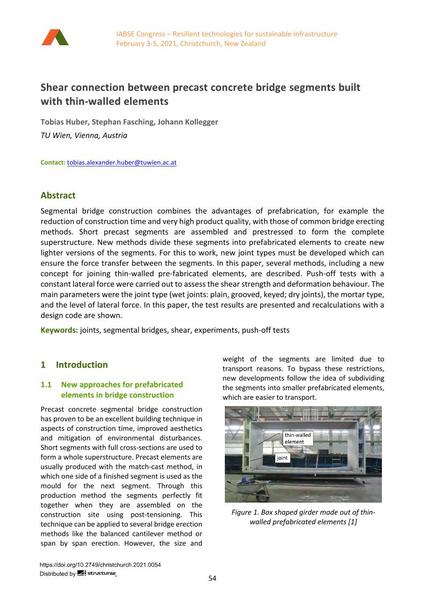Shear connection between precast concrete bridge segments built with thin-walled elements

|
|
|||||||||||
Détails bibliographiques
| Auteur(s): |
Tobias Huber
(TU Wien, Vienna, Austria)
Stephan Fasching (TU Wien, Vienna, Austria) Johann Kollegger (TU Wien, Vienna, Austria) |
||||
|---|---|---|---|---|---|
| Médium: | papier de conférence | ||||
| Langue(s): | anglais | ||||
| Conférence: | IABSE Congress: Resilient technologies for sustainable infrastructure, Christchurch, New Zealand, 3-5 February 2021 | ||||
| Publié dans: | IABSE Congress Christchurch 2020 | ||||
|
|||||
| Page(s): | 54-61 | ||||
| Nombre total de pages (du PDF): | 8 | ||||
| DOI: | 10.2749/christchurch.2021.0054 | ||||
| Abstrait: |
Segmental bridge construction combines the advantages of prefabrication, for example the reduction of construction time and very high product quality, with those of common bridge erecting methods. Short precast segments are assembled and prestressed to form the complete superstructure. New methods divide these segments into prefabricated elements to create new lighter versions of the segments. For this to work, new joint types must be developed which can ensure the force transfer between the segments. In this paper, several methods, including a new concept for joining thin-walled pre-fabricated elements, are described. Push-off tests with a constant lateral force were carried out to assess the shear strength and deformation behaviour. The main parameters were the joint type (wet joints: plain, grooved, keyed; dry joints), the mortar type, and the level of lateral force. In this paper, the test results are presented and recalculations with a design code are shown. |
||||
